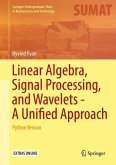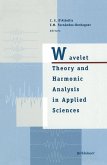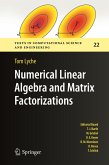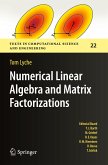This book offers a user friendly, hands-on, and systematic introduction to applied and computational harmonic analysis: to Fourier analysis, signal processing and wavelets; and to their interplay and applications. The approach is novel, and the book can be used in undergraduate courses, for example, following a first course in linear algebra, but is also suitable for use in graduate level courses. The book will benefit anyone with a basic background in linear algebra. It defines fundamental concepts in signal processing and wavelet theory, assuming only a familiarity with elementary linear algebra. No background in signal processing is needed. Additionally, the book demonstrates in detail why linear algebra is often the best way to go. Those with only a signal processing background are also introduced to the world of linear algebra, although a full course is recommended.
The book comes in two versions: one based on MATLAB, and one on Python, demonstrating the feasibility and applications of both approaches. Most of the MATLAB code is available interactively. The applications mainly involve sound and images. The book also includes a rich set of exercises, many of which are of a computational nature.
The book comes in two versions: one based on MATLAB, and one on Python, demonstrating the feasibility and applications of both approaches. Most of the MATLAB code is available interactively. The applications mainly involve sound and images. The book also includes a rich set of exercises, many of which are of a computational nature.
"A beginning student who is unfamiliar with the mathematics behind signal processing will find much here that explains the techniques and the issues associated with their use. Altogether the book presents a beautiful introduction to the uses of linear algebra in signal processing." (MAA Reviews, July 18, 2020)
"This book is a very useful textbook for undergraduate students in applied mathematics and engineering disciplines, but it is also suitable for graduate level courses." (Manfred Tasche, zbMATH 1420.65001, 2019)
"This book is a very useful textbook for undergraduate students in applied mathematics and engineering disciplines, but it is also suitable for graduate level courses." (Manfred Tasche, zbMATH 1420.65001, 2019)








